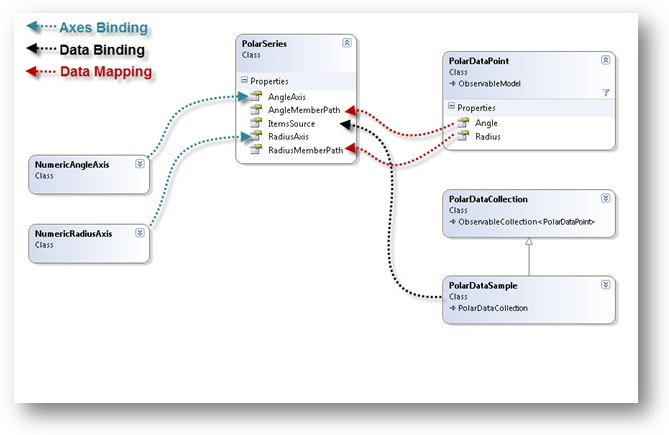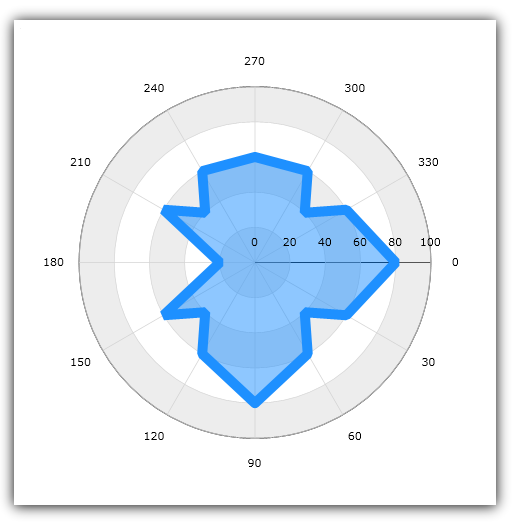
This topic provides conceptual information to all types of Polar Series in the XamDataChart™ control.
This topic contains the following sections:
In the XamDataChart control, Polar Series is a group of series that use the polar (angle, radius) coordinate system instead of the Cartesian (x, y) coordinate system to plot data in chart. In other words, Polar Series take concepts of Scatter Series and wrap them around a circle rather than stretching along a horizontal line. This group of series is used to show the relationship among the items in several distinct series of data using the polar coordinates system.
Polar Series draw attention to uneven intervals or clusters of data. They are often used to plot scientific data (e.g. wind direction and speed, direction, and strength of magnetic field, location of objects in solar system), and can highlight the deviation of collected data from predicted results.
The XamDataChart control supports the following types of Polar Series and each of them is discussed in an individual topic:
Refer to above topics to learn how to create a specific type of Polar Series and bind data to it.
This section provides preview images for all types of Polar Series.

Figure 1: Sample Polar Area Series
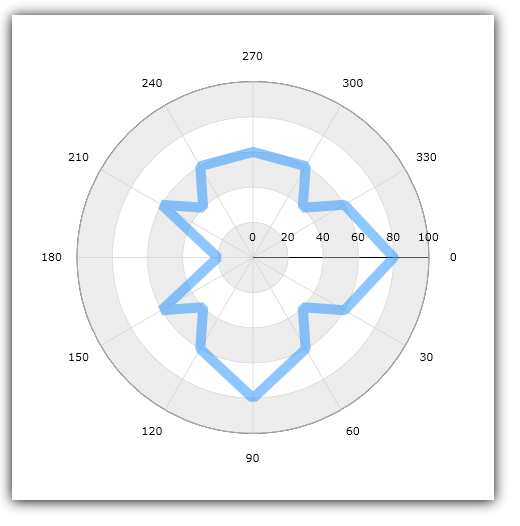
Figure 2: Sample Polar Line Series
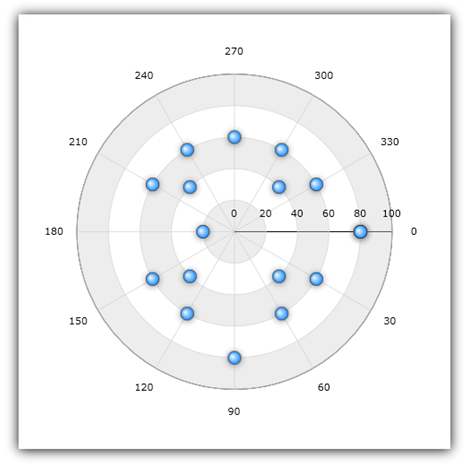
Figure 3: Sample Polar Scatter Series
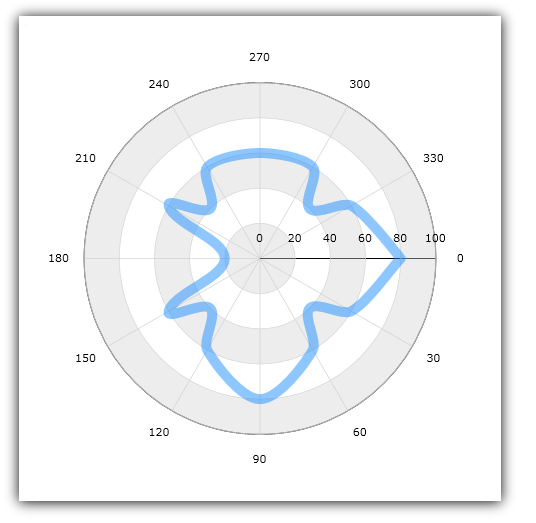
Figure 4: Sample Polar Spline Series
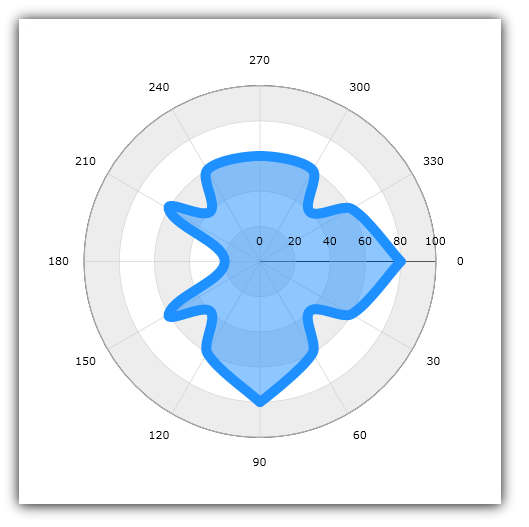
Figure 5: Sample Polar Spline Area Series
Some Polar Series have a rough equivalent to Scatter Series. The following table shows an analogy between these types of series by mapping types of the Polar Series to types of Scatter Series.
The XamDataChart control provides various types of axes but only two types of axes can be used with all types of Polar Series. The following table lists these supported axes:
In addition, each of Polar Series must have binding set to one angle axis using the AngleAxis property and one radius axis using the RadiusAxis property. For more information on axes refer to these topics:
In polar coordinate systems, the location of data points is determined by an angle (angular coordinate) from a fixed direction and distance (radial coordinate) from a fixed point (analogous to the origin of a Cartesian coordinate) which is called "the pole". The lines that start from the pole and point outwards are gridlines of the angular axis (NumericAngleAxis) and the concentric rings that surround the pole are gridlines of the radius axis (NumericRadiusAxis). For more information on how to use axes with Polar Series, refer to the Chart Axes topic.
Figure 6 shows PolarScatterSeries with four data points at various locations in polar coordinate system:
the blue point is located at the center of the polar chart (0,0 is the pole in the polar coordinate system)
the red point has a radial coordinate of 120 and angular coordinate of 90 (120, 90)
the green point has a radial coordinate of 80 and angular coordinate of 60 (80, 60)
the orange point has a radial coordinate of 160 and angular coordinate of 150 (160, 150)
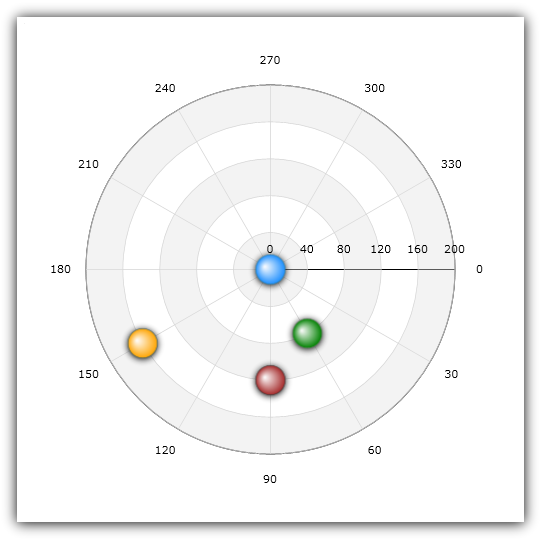
Figure 6: Schematic representation of data plotting in polar coordinate system in the XamDataChart control
This section provides information about binding data for all types of Polar Series from data requirements through data sample to binding diagrams.
Similarly to other types of series in the XamDataChart control, Polar Series also use ItemsSource property to bind data. The following is a list of data requirements for Polar Series:
The data model must contain at least one numeric data column (e.g. Angle) which is mapped using the AngleMemberPath property of Polar series (e.g. PolarLineSeries)
The data model must contain at least second numeric data column (e.g. Radius) which is mapped using the RadiusMemberPath property of Polar series (e.g. PolarLineSeries)
The data source must contain at least one data items otherwise the chart will not render the Polar series.
The data source must implement the IEnumerable interface (e.g. List, Collection, Queue, or Stack)
For more information on the requirements for the specific types of series, refer to the Series Requirements topic.
An example of object that meets above criteria is the PolarDataSource which you can download and use it in your project.
The following figure shows how binding data to Polar Series works in the XamDataChart control.
